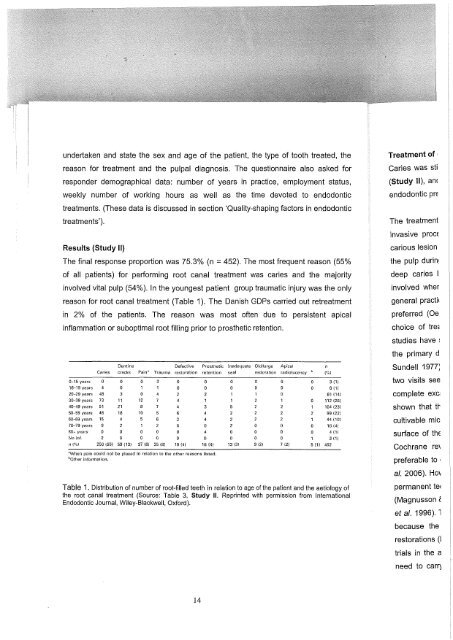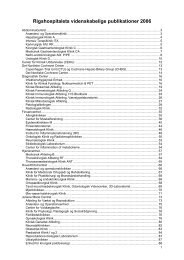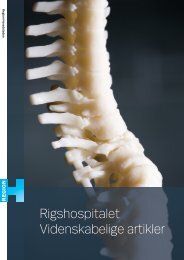View - CTU
View - CTU
View - CTU
Create successful ePaper yourself
Turn your PDF publications into a flip-book with our unique Google optimized e-Paper software.
undertaken and state the sex and age of the patient, the type of tooth treated, the<br />
reason for treatment and the pulpal diagnosis. The questionnaire also asked for<br />
responder demographical data: number of years in practice, employment status,<br />
weekly number of working hours as well as the time devoted to endodontic<br />
Treatment of 1<br />
Caries was sti<br />
(Study II), an<<br />
endodontic pre<br />
treatments. (These data is discussed in section 'Quality-shaping factors in endodontic<br />
treatments').<br />
The treatment<br />
invasive proce<br />
Results (Study II)<br />
The final response proportion was 75.3% (n = 452). The most frequent reason (55%<br />
of all patients) for performing root canal treatment was caries and the majority<br />
involved vital pulp (54%). In the youngest patient group traumatic injury was the only<br />
reason for root canal treatment (Table 1 ). The Danish GDPs carried out retreatment<br />
in 2% of the patients. The reason was most often due to persistent apical<br />
inflammation or suboptimal root filling prior to prosthetic retention.<br />
carious lesion<br />
the pulp durin!<br />
deep caries I<br />
involved wher<br />
general practi(<br />
preferred (Oe<br />
choice of tree<br />
studies have :<br />
the primary d<br />
Dentine Defective Prosthetic Inadequate Oldilarge Apical<br />
Carles crncks Pain'' Trauma restoration retention seal resloration radiolucency<br />
"<br />
(%)<br />
0-15 years 0 0 0 0 0 3 {1)<br />
16--19 years 0 0 6 (1)<br />
20-29 years 48 2 61 {14)<br />
30-39 ye








